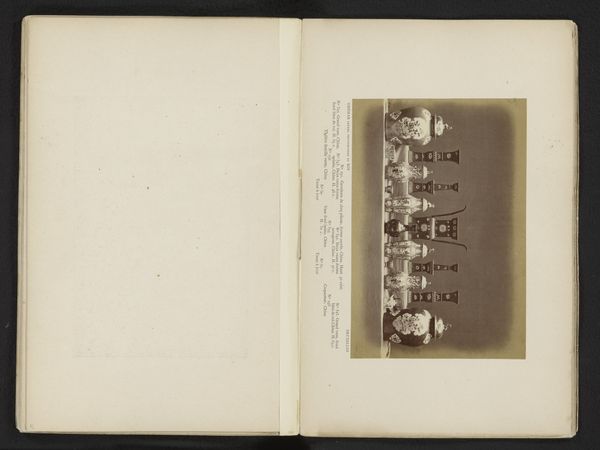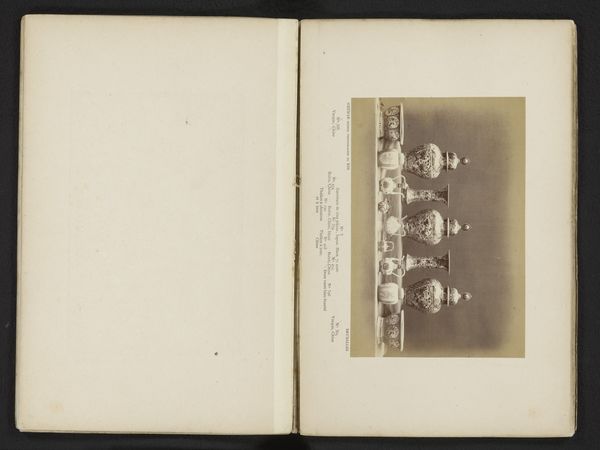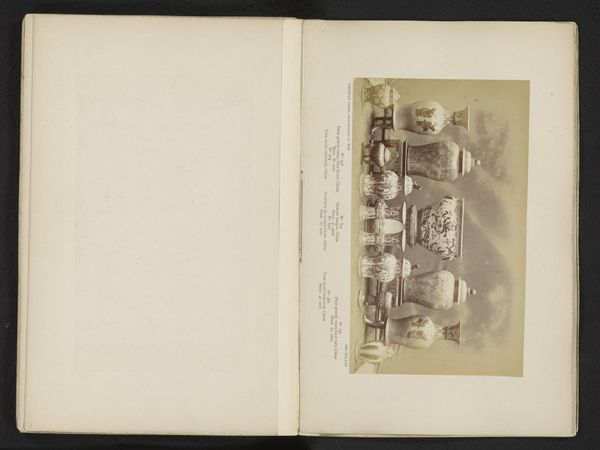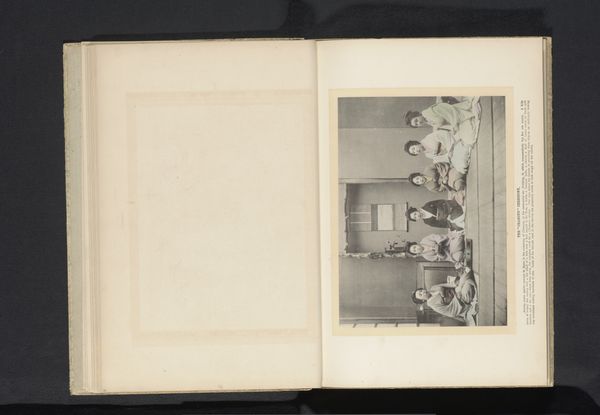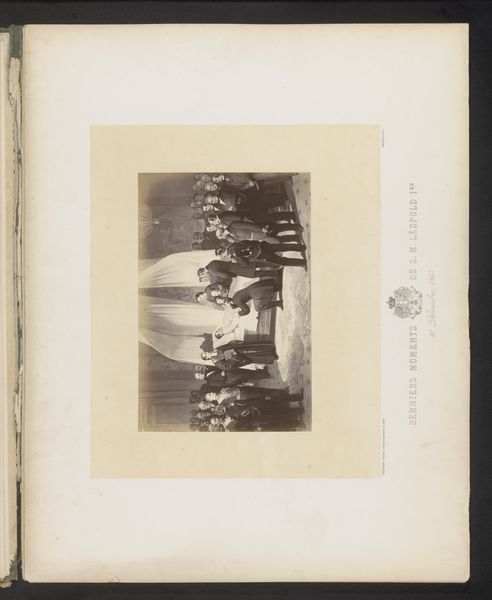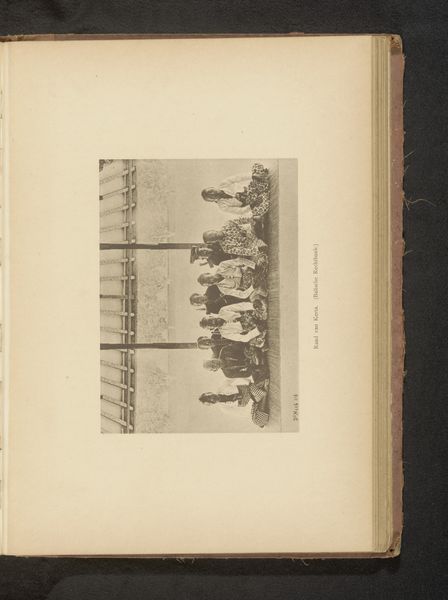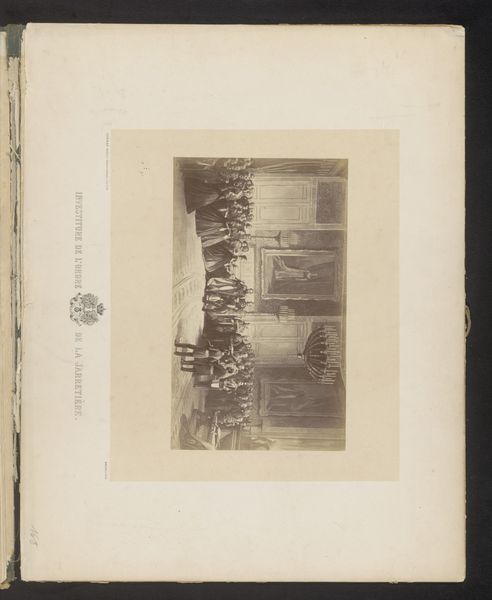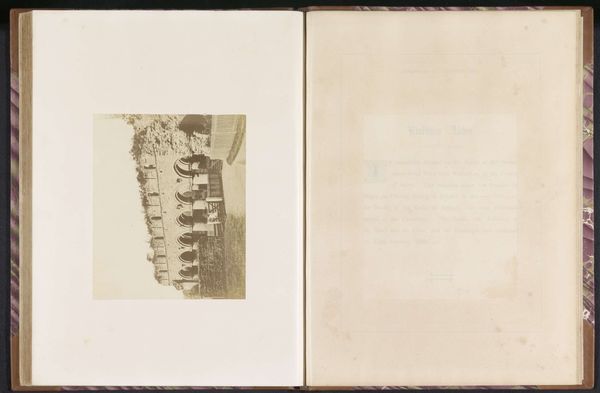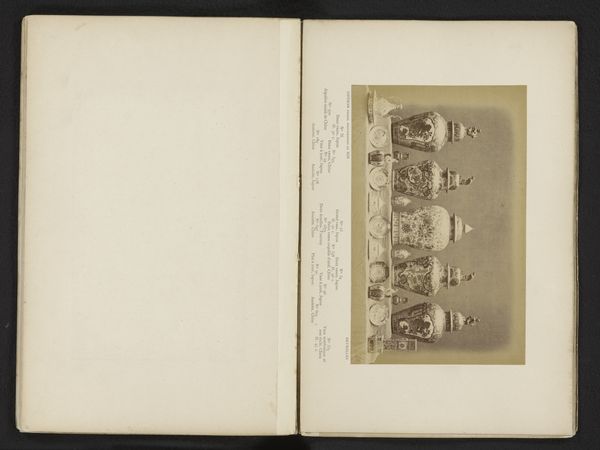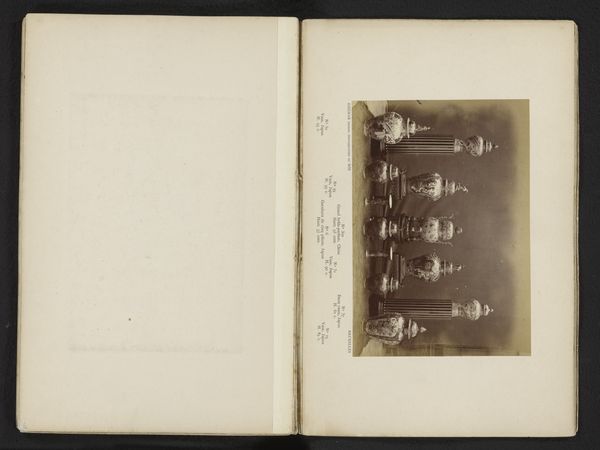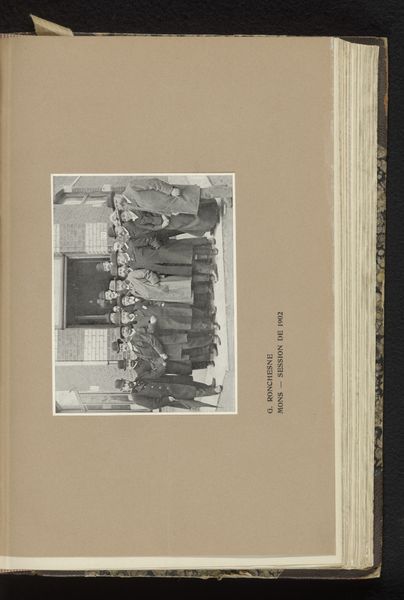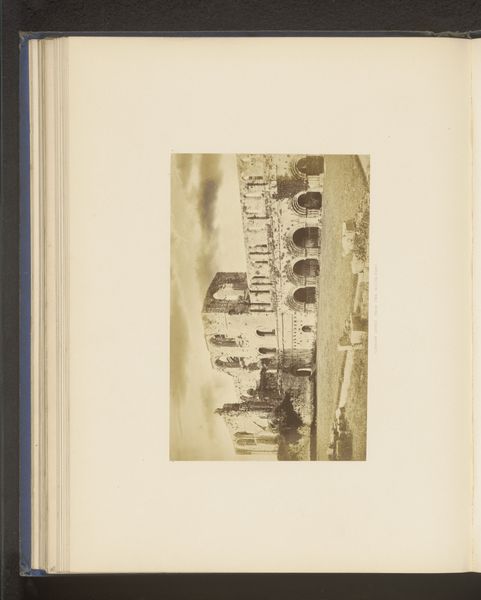
Veertien objecten, waaronder een Chinese ketel, Chinese en Japanse vazen before 1875
0:00
0:00
print, photography, sculpture
# print
#
asian-art
#
vase
#
photography
#
sculpture
#
orientalism
Dimensions: height 120 mm, width 173 mm
Copyright: Rijks Museum: Open Domain
Editor: So, this photographic print from before 1875, titled "Veertien objecten, waaronder een Chinese ketel, Chinese en Japanse vazen" by Ghémar Frères... It has an almost ghostly quality with all the porcelain, like capturing artifacts from another world. How do you interpret this array of objects? Curator: Immediately, I’m struck by the cultural exchange on display, a kind of material dialogue frozen in time. What stories do these objects whisper about trade routes, artistic influence, and perhaps even colonial aspirations? The act of photographing these items flattens the diverse, yet, it reveals a collector’s mindset prevalent at the time. Do you think the intent was documentary or to evoke a sense of exoticism? Editor: That’s a great question. It’s definitely staged, perhaps leaning into the ‘exoticism’ you mentioned. Each vase seems carefully positioned to accentuate the height. But I keep thinking about what these objects *meant* to people back then. Curator: Exactly! We have to consider the symbolic weight these forms carried. The vase, for instance, wasn't just a vessel. Often, in both Chinese and Japanese cultures, they embodied status, sophistication, and connection to history. Can we decipher how this photograph contributes to a wider "Orientalist" visual language of the period? Editor: Interesting. I never considered that photographs themselves could perpetuate such symbolism, too. Curator: Photography was more than simple record-keeping back then; it was myth-making, meaning-making. Now, think about the Western gaze. How would it interpret these objects based on their pre-conceived notions about Asia, using stereotypes and biased symbols that may have been projected onto those beautiful porcelains? Editor: This makes me want to research about the personal narratives around collecting. It looks more involved than an mere act of gathering things. Thanks so much! Curator: Absolutely. Remember, the enduring power of images lies in their ability to carry both overt and concealed cultural messages across generations. That's a very pertinent aspect of visual learning that one should treasure.
Comments
No comments
Be the first to comment and join the conversation on the ultimate creative platform.
